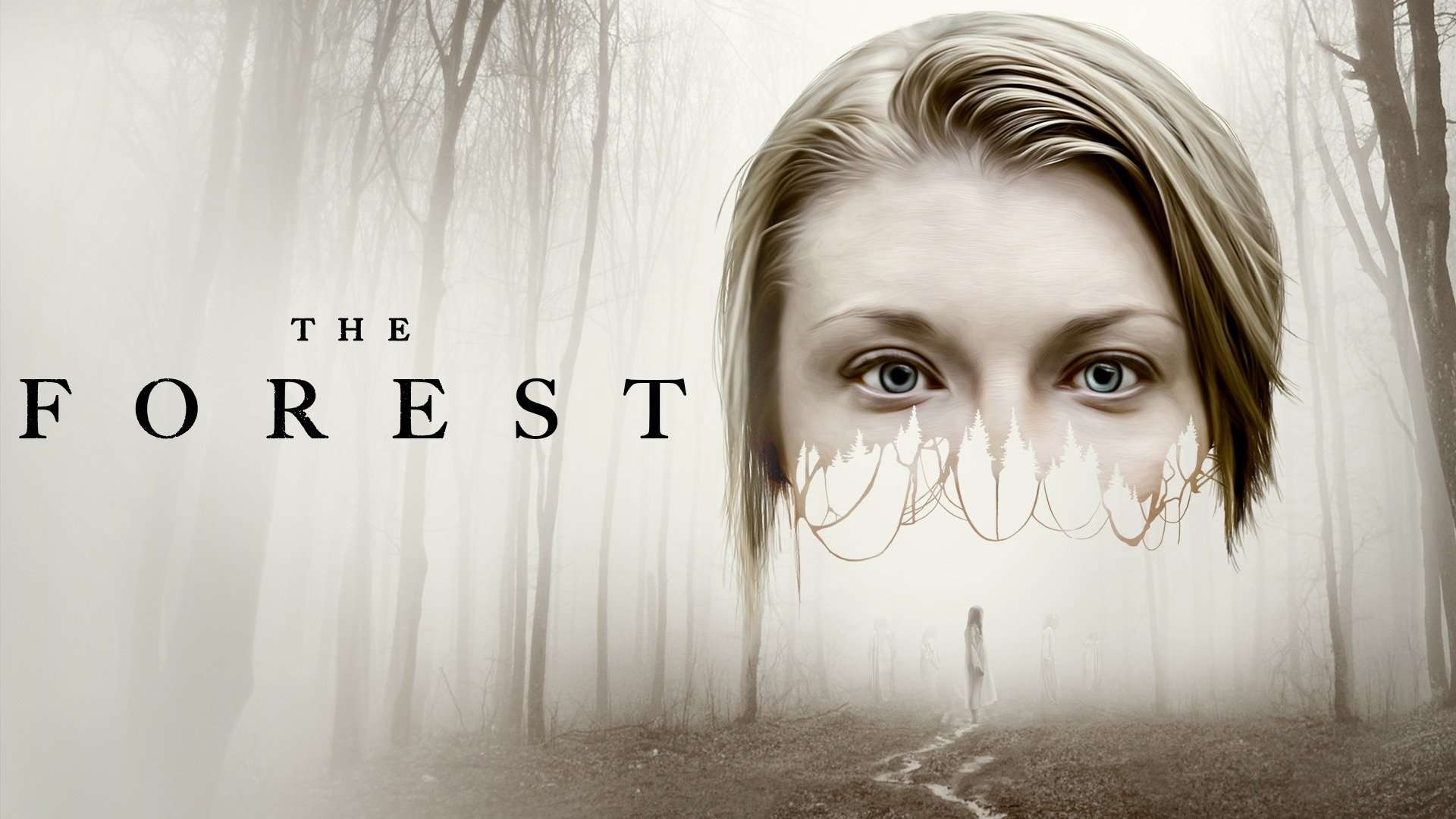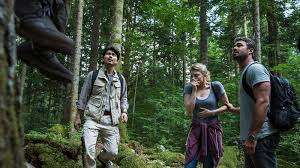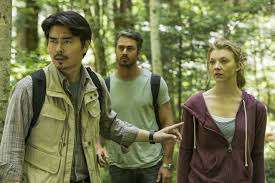Director: Jason Zada
Starring: Natalie Dormer, Taylor Kinney, Eoin Macken
Genre: Psychological Horror
Release Date: January 8, 2016
Introduction
Set against the eerie backdrop of Japan’s Aokigahara Forest—a real-life location infamous for suicides—The Forest (2016) is a psychological horror film that blends supernatural dread with deep-seated trauma. Directed by Jason Zada and starring Natalie Dormer in a dual role, the film attempts to explore grief, guilt, and the thin line between reality and hallucination. While it delivers a chilling atmosphere and strong lead performance, The Forest struggles with narrative cohesion and reliance on conventional horror tropes.
Plot Summary
Sara Price (Natalie Dormer) travels to Japan after learning that her twin sister, Jess, has gone missing in Aokigahara, known as the “Suicide Forest.” Despite warnings from locals and authorities, Sara ventures into the forest with journalist Aiden (Taylor Kinney) and guide Michi (Yukiyoshi Ozawa). As she searches for Jess, Sara begins experiencing terrifying visions, making it increasingly difficult to distinguish reality from illusion. The forest, rumored to be haunted by vengeful spirits (yūrei), preys on her deepest fears, forcing her to confront her own past trauma.

Strengths
1. Atmosphere & Setting
The film’s greatest asset is its unsettling atmosphere. Aokigahara’s real-world infamy lends an inherent creepiness, and cinematographer Mattias Troelstrup captures the forest’s oppressive beauty—thick fog, gnarled trees, and an eerie silence that amplifies the dread. The setting alone makes The Forest worth watching for horror fans who appreciate location-driven scares.
2. Natalie Dormer’s Performance

Dormer carries the film with a compelling dual performance as both Sara and Jess. Her portrayal of Sara’s unraveling sanity is convincing, blending vulnerability with desperation. The subtle differences in her body language between the two sisters add depth to an otherwise formulaic script.
3. Psychological Horror Elements
When the film leans into psychological terror—Sara’s visions, distorted memories, and the forest’s manipulation of her mind—it works well. The idea that the forest “feeds on sorrow” is a haunting metaphor for depression and unresolved grief.
4. Cultural Authenticity
The film incorporates Japanese folklore effectively, particularly the concept of yūrei (restless spirits) and the cultural significance of Aokigahara. While not a deep exploration, it adds a layer of authenticity missing from many Western horror films set in foreign locales.
Weaknesses
1. Predictable Jump Scares
Despite its strong atmosphere, The Forest falls back on tired horror clichés—sudden loud noises, ghostly figures appearing in mirrors, and characters being grabbed by unseen forces. These moments feel cheap compared to the film’s more psychological strengths.
2. Underdeveloped Supporting Characters
Aiden (Taylor Kinney) and Michi (Yukiyoshi Ozawa) are thinly written. Aiden’s motivations are unclear, and Michi, despite being the most interesting character, gets sidelined too quickly. The film misses an opportunity to explore their perspectives more deeply.
3. Confusing Third Act
The finale leans too heavily into ambiguity, leaving key questions unanswered. While some horror films benefit from open-ended conclusions, The Forest’s climax feels rushed and unsatisfying, undermining its psychological buildup.
4. Wasted Potential
Aokigahara’s real-life horror—its association with suicide and isolation—could have been explored with more sensitivity and depth. Instead, the film often treats it as a generic “haunted forest,” missing a chance for deeper social commentary.
Themes & Interpretation
1. Grief and Guilt
Sara’s journey is ultimately about confronting repressed trauma. The forest acts as a manifestation of her guilt, particularly regarding her sister. This psychological angle is where the film shines brightest.
2. The Supernatural vs. Mental Illness
Is Sara truly haunted, or is she losing her mind? The film plays with this ambiguity effectively at times, though it could have delved deeper into the theme.
3. The Power of Place
Aokigahara is more than a setting—it’s an active, malevolent force. The idea that a location can absorb and reflect human despair is a compelling horror concept.
Final Verdict
The Forest is a mixed bag. It excels in atmosphere, performance, and psychological tension but falters with clichéd scares and narrative inconsistencies. While not a standout in the horror genre, it’s a visually gripping film with enough eerie moments to satisfy fans of supernatural thrillers.
Rating: 6/10
“A visually haunting but uneven horror film that benefits from its chilling setting and Natalie Dormer’s strong performance, even if it doesn’t fully explore its dark potential.”
Recommendation:
- Watch if you enjoy atmospheric horror, psychological thrillers, or films based on real-life legends.
- Skip if you prefer tightly plotted narratives or original scare tactics over jump scares.
Final Thought: The Forest is worth a viewing for its eerie setting and Dormer’s performance, but don’t expect it to linger in your mind like the spirits of Aokigahara.






